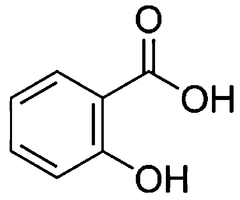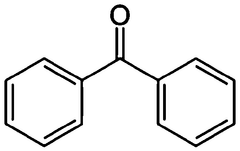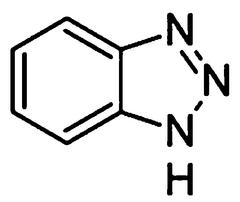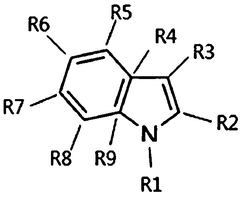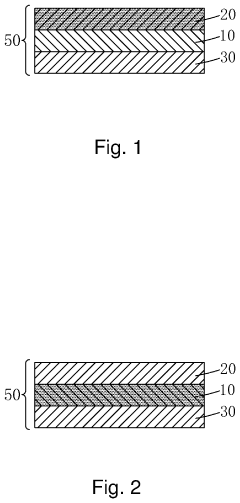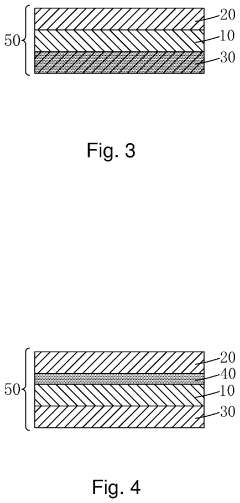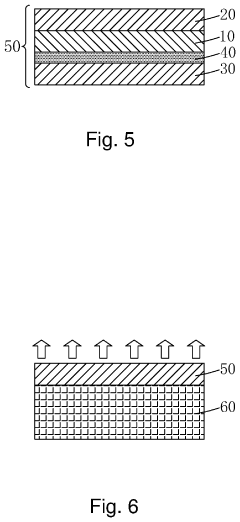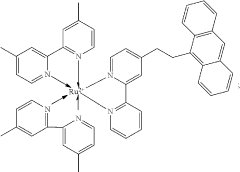Evaluate WOLED Blue Light Effects on Eye Comfort in Displays
SEP 16, 20259 MIN READ
Generate Your Research Report Instantly with AI Agent
Patsnap Eureka helps you evaluate technical feasibility & market potential.
WOLED Blue Light Technology Background and Objectives
White Organic Light-Emitting Diode (WOLED) technology has evolved significantly over the past two decades, transforming from laboratory experiments to mainstream display technology. The development trajectory began in the late 1990s with the first practical OLED devices, followed by significant breakthroughs in white light emission techniques in the early 2000s. By 2010, WOLED technology started appearing in commercial displays, with rapid adoption accelerating after 2015 due to manufacturing scale improvements and cost reductions.
The blue light component in WOLED displays represents a critical area of concern within the broader context of digital eye strain and potential long-term ocular health impacts. Blue light, characterized by wavelengths between 415-455nm, has been associated with various visual discomfort symptoms and potential retinal photochemical damage through cumulative exposure. As display usage time increases globally—with average daily screen time exceeding 7 hours for many professionals—the cumulative effects of blue light exposure have become a significant health consideration.
Current WOLED implementations typically utilize phosphorescent red and green emitters combined with fluorescent blue emitters, creating a spectral power distribution with a pronounced blue peak. This technical approach stems from efficiency and lifespan limitations in blue phosphorescent materials, resulting in displays that emit approximately 25-30% more blue light than traditional LCD technology with similar color temperature settings.
The primary technical objective in this domain is to develop WOLED display technologies that maintain high visual performance while reducing potentially harmful blue light emissions. This involves several parallel technical goals: optimizing the spectral power distribution to minimize the 415-455nm wavelength intensity without compromising color accuracy; developing more efficient blue emitters with narrower spectral profiles; and implementing intelligent brightness control systems that adjust blue light output based on ambient conditions and usage patterns.
Recent research has focused on alternative approaches including quantum dot color conversion layers, specialized optical filters, and novel TADF (Thermally Activated Delayed Fluorescence) blue emitters. These technologies aim to address the fundamental tension between display performance metrics (color gamut, brightness, power efficiency) and eye comfort considerations.
The evaluation of blue light effects requires interdisciplinary collaboration between display engineers, ophthalmologists, and human factors researchers to establish meaningful metrics beyond simple blue light reduction percentages. The ultimate goal is to develop evidence-based standards for "eye-friendly" displays that balance visual performance with long-term ocular health considerations, potentially leading to new certification standards for eye-safe display technologies.
The blue light component in WOLED displays represents a critical area of concern within the broader context of digital eye strain and potential long-term ocular health impacts. Blue light, characterized by wavelengths between 415-455nm, has been associated with various visual discomfort symptoms and potential retinal photochemical damage through cumulative exposure. As display usage time increases globally—with average daily screen time exceeding 7 hours for many professionals—the cumulative effects of blue light exposure have become a significant health consideration.
Current WOLED implementations typically utilize phosphorescent red and green emitters combined with fluorescent blue emitters, creating a spectral power distribution with a pronounced blue peak. This technical approach stems from efficiency and lifespan limitations in blue phosphorescent materials, resulting in displays that emit approximately 25-30% more blue light than traditional LCD technology with similar color temperature settings.
The primary technical objective in this domain is to develop WOLED display technologies that maintain high visual performance while reducing potentially harmful blue light emissions. This involves several parallel technical goals: optimizing the spectral power distribution to minimize the 415-455nm wavelength intensity without compromising color accuracy; developing more efficient blue emitters with narrower spectral profiles; and implementing intelligent brightness control systems that adjust blue light output based on ambient conditions and usage patterns.
Recent research has focused on alternative approaches including quantum dot color conversion layers, specialized optical filters, and novel TADF (Thermally Activated Delayed Fluorescence) blue emitters. These technologies aim to address the fundamental tension between display performance metrics (color gamut, brightness, power efficiency) and eye comfort considerations.
The evaluation of blue light effects requires interdisciplinary collaboration between display engineers, ophthalmologists, and human factors researchers to establish meaningful metrics beyond simple blue light reduction percentages. The ultimate goal is to develop evidence-based standards for "eye-friendly" displays that balance visual performance with long-term ocular health considerations, potentially leading to new certification standards for eye-safe display technologies.
Market Analysis of Eye-Friendly Display Solutions
The display technology market has witnessed a significant shift towards eye-friendly solutions in recent years, primarily driven by increasing consumer awareness about digital eye strain and blue light exposure concerns. The global eye-friendly display market was valued at approximately 12 billion USD in 2022 and is projected to grow at a compound annual growth rate of 8.7% through 2028, reflecting strong consumer demand for healthier visual experiences.
Consumer electronics manufacturers have recognized this trend, with major players like Samsung, LG, and Apple incorporating various blue light reduction technologies into their product lines. Market research indicates that approximately 65% of consumers now consider eye comfort features when purchasing new display devices, compared to just 28% five years ago. This shift represents a fundamental change in consumer priorities, placing health considerations alongside traditional purchasing factors such as resolution and color accuracy.
The enterprise sector has emerged as a particularly strong growth segment, with businesses increasingly implementing eye-friendly display solutions to comply with workplace health regulations and improve employee wellbeing. Corporate procurement of low blue light displays increased by 47% between 2020 and 2022, accelerated by remote work trends during the pandemic period. Healthcare institutions have similarly embraced these technologies, with 78% of hospitals and clinics now specifying eye-friendly displays in their procurement guidelines.
Regional analysis reveals varying adoption rates, with North America and Europe leading in premium eye-friendly display adoption, while Asia-Pacific markets show the fastest growth trajectory. China, in particular, has seen domestic manufacturers rapidly developing competitive eye-friendly technologies, capturing 34% of their home market. The Middle East and Africa regions remain underpenetrated but show promising growth potential as awareness increases.
By display technology segment, OLED-based solutions currently command a price premium but are gaining market share due to their inherent blue light advantages compared to traditional LCD displays. The WOLED (White OLED) subsegment has grown by 23% annually since 2019, with consumers willing to pay an average of 15-20% more for displays marketed with enhanced eye comfort features. LCD manufacturers have responded with improved filtering technologies and software solutions to maintain competitiveness.
Market forecasts indicate that eye-friendly display features will transition from premium differentiators to standard requirements across all price segments by 2025. This evolution presents both opportunities and challenges for display manufacturers, as they must balance cost considerations with increasingly stringent eye comfort expectations from consumers and regulatory bodies worldwide.
Consumer electronics manufacturers have recognized this trend, with major players like Samsung, LG, and Apple incorporating various blue light reduction technologies into their product lines. Market research indicates that approximately 65% of consumers now consider eye comfort features when purchasing new display devices, compared to just 28% five years ago. This shift represents a fundamental change in consumer priorities, placing health considerations alongside traditional purchasing factors such as resolution and color accuracy.
The enterprise sector has emerged as a particularly strong growth segment, with businesses increasingly implementing eye-friendly display solutions to comply with workplace health regulations and improve employee wellbeing. Corporate procurement of low blue light displays increased by 47% between 2020 and 2022, accelerated by remote work trends during the pandemic period. Healthcare institutions have similarly embraced these technologies, with 78% of hospitals and clinics now specifying eye-friendly displays in their procurement guidelines.
Regional analysis reveals varying adoption rates, with North America and Europe leading in premium eye-friendly display adoption, while Asia-Pacific markets show the fastest growth trajectory. China, in particular, has seen domestic manufacturers rapidly developing competitive eye-friendly technologies, capturing 34% of their home market. The Middle East and Africa regions remain underpenetrated but show promising growth potential as awareness increases.
By display technology segment, OLED-based solutions currently command a price premium but are gaining market share due to their inherent blue light advantages compared to traditional LCD displays. The WOLED (White OLED) subsegment has grown by 23% annually since 2019, with consumers willing to pay an average of 15-20% more for displays marketed with enhanced eye comfort features. LCD manufacturers have responded with improved filtering technologies and software solutions to maintain competitiveness.
Market forecasts indicate that eye-friendly display features will transition from premium differentiators to standard requirements across all price segments by 2025. This evolution presents both opportunities and challenges for display manufacturers, as they must balance cost considerations with increasingly stringent eye comfort expectations from consumers and regulatory bodies worldwide.
Current WOLED Blue Light Emission Challenges
White Organic Light-Emitting Diode (WOLED) technology has emerged as a leading display solution in recent years, offering advantages in power efficiency, contrast ratio, and form factor flexibility. However, the blue light emission component in WOLED displays presents significant challenges that impact both technical performance and user eye comfort. Current WOLED implementations struggle with blue light emission stability, which remains the most problematic color component in the RGB spectrum.
The primary challenge lies in the molecular stability of blue OLED materials. Blue-emitting organic compounds typically have shorter operational lifetimes compared to their red and green counterparts, degrading more rapidly under normal operating conditions. This degradation manifests as color shift over time, reducing display quality and consistency. Industry data indicates that blue OLED materials may degrade 3-5 times faster than red or green materials, creating a significant bottleneck in overall display longevity.
Energy efficiency presents another critical challenge. Blue light emission in WOLEDs requires higher driving voltages to achieve comparable brightness levels to red and green subpixels. This differential power requirement not only increases overall energy consumption but also creates thermal management issues that can further accelerate material degradation. Current blue OLED materials operate at approximately 25-30% lower power efficiency than green OLEDs, creating a significant performance gap.
From a human factors perspective, blue light emission in the 415-455nm wavelength range has been associated with potential negative effects on circadian rhythm and visual comfort. Studies indicate that prolonged exposure to high-energy blue light may contribute to digital eye strain and potentially impact sleep quality. WOLED displays currently struggle to balance the need for accurate color reproduction with concerns about blue light exposure, particularly in devices used during evening hours.
Manufacturing consistency represents another significant hurdle. Blue OLED materials exhibit greater sensitivity to production variables, resulting in higher yield loss and color variation between production batches. This inconsistency increases manufacturing costs and complicates quality control processes. Industry reports suggest yield rates for high-quality blue OLED components may be 15-20% lower than for other colors.
Spectral purity also remains problematic in current WOLED implementations. Blue emission often exhibits broader spectral distribution than ideal, creating color gamut limitations and reducing overall color accuracy. This spectral challenge directly impacts the display's ability to render true-to-life images and maintain color fidelity across different content types.
These combined challenges have driven significant research investment in alternative blue light emitting materials, including phosphorescent compounds, thermally activated delayed fluorescence (TADF) emitters, and quantum dot hybrid approaches. However, a comprehensive solution that addresses all current limitations remains elusive in commercial WOLED applications.
The primary challenge lies in the molecular stability of blue OLED materials. Blue-emitting organic compounds typically have shorter operational lifetimes compared to their red and green counterparts, degrading more rapidly under normal operating conditions. This degradation manifests as color shift over time, reducing display quality and consistency. Industry data indicates that blue OLED materials may degrade 3-5 times faster than red or green materials, creating a significant bottleneck in overall display longevity.
Energy efficiency presents another critical challenge. Blue light emission in WOLEDs requires higher driving voltages to achieve comparable brightness levels to red and green subpixels. This differential power requirement not only increases overall energy consumption but also creates thermal management issues that can further accelerate material degradation. Current blue OLED materials operate at approximately 25-30% lower power efficiency than green OLEDs, creating a significant performance gap.
From a human factors perspective, blue light emission in the 415-455nm wavelength range has been associated with potential negative effects on circadian rhythm and visual comfort. Studies indicate that prolonged exposure to high-energy blue light may contribute to digital eye strain and potentially impact sleep quality. WOLED displays currently struggle to balance the need for accurate color reproduction with concerns about blue light exposure, particularly in devices used during evening hours.
Manufacturing consistency represents another significant hurdle. Blue OLED materials exhibit greater sensitivity to production variables, resulting in higher yield loss and color variation between production batches. This inconsistency increases manufacturing costs and complicates quality control processes. Industry reports suggest yield rates for high-quality blue OLED components may be 15-20% lower than for other colors.
Spectral purity also remains problematic in current WOLED implementations. Blue emission often exhibits broader spectral distribution than ideal, creating color gamut limitations and reducing overall color accuracy. This spectral challenge directly impacts the display's ability to render true-to-life images and maintain color fidelity across different content types.
These combined challenges have driven significant research investment in alternative blue light emitting materials, including phosphorescent compounds, thermally activated delayed fluorescence (TADF) emitters, and quantum dot hybrid approaches. However, a comprehensive solution that addresses all current limitations remains elusive in commercial WOLED applications.
Existing Blue Light Mitigation Approaches in WOLED
01 Spectrum optimization for eye comfort
WOLED displays can be designed with optimized light spectrum to reduce eye strain and fatigue. By adjusting the color temperature and reducing blue light emission, these displays provide more comfortable viewing experiences. The technology involves specific phosphorescent materials and color filters that create a balanced white light output with reduced harmful wavelengths while maintaining color accuracy and visual quality.- Spectrum optimization for eye comfort: WOLED displays can be designed with optimized light spectrum to reduce eye strain and fatigue. By adjusting the color temperature and reducing blue light emission, these displays create a more comfortable viewing experience. The technology involves specific phosphorescent materials and color filters that can produce warm white light with reduced harmful blue light components while maintaining color accuracy and visual quality.
- Brightness control and flicker reduction: Advanced brightness control mechanisms in WOLEDs help reduce eye strain by automatically adjusting light output based on ambient conditions. These systems incorporate flicker reduction technology that stabilizes the display's refresh rate and power delivery to minimize imperceptible flickering that causes eye fatigue. Some implementations use pulse width modulation techniques with high frequency to eliminate visible flicker while maintaining energy efficiency.
- Multi-layer structure for light diffusion: WOLEDs designed for eye comfort often employ multi-layer structures that include diffusion layers to distribute light more evenly across the display surface. These layers help reduce harsh light spots and create a softer illumination pattern that is less stressful on the eyes. The technology may incorporate specialized optical films, micro-lens arrays, or scattering particles to achieve optimal light distribution without compromising display resolution or clarity.
- Low blue light emission technology: Specific WOLED designs focus on reducing blue light emission, which is known to cause digital eye strain and potentially disrupt sleep patterns. These technologies modify the organic materials and pixel structure to shift the spectral output away from high-energy blue wavelengths while maintaining color accuracy. Some approaches use specialized color filters or quantum dot enhancement films to convert harmful blue light into less damaging wavelengths.
- Adaptive display technology for circadian rhythm: Advanced WOLEDs incorporate adaptive display technologies that adjust color temperature and brightness throughout the day to align with the human circadian rhythm. These systems automatically shift to warmer color temperatures in the evening to reduce blue light exposure before sleep and brighter, cooler light during daytime hours. The technology uses ambient light sensors and time-based algorithms to make these adjustments gradually and comfortably for the user's eyes.
02 Brightness control and flicker reduction
Advanced brightness control mechanisms in WOLEDs help reduce eye discomfort by automatically adjusting light output based on ambient conditions. These systems incorporate flicker reduction technology that stabilizes the display's refresh rate and power delivery to eliminate imperceptible flickering that causes eye strain. Sensors detect environmental light conditions to optimize brightness levels, while specialized driving circuits ensure consistent illumination.Expand Specific Solutions03 Multi-layer structure for diffused illumination
WOLEDs designed for eye comfort utilize specialized multi-layer structures that help diffuse light evenly across the display surface. These layers include light-scattering materials and micro-lens arrays that eliminate harsh bright spots and create uniform illumination. The technology distributes light particles more evenly, reducing contrast extremes that cause pupil adjustment strain and resulting in a more natural viewing experience.Expand Specific Solutions04 Low blue light emission technology
Specific WOLED formulations focus on reducing blue light emission, which is known to cause digital eye strain and potentially disrupt sleep patterns. These displays incorporate special organic materials and color filters that maintain color accuracy while limiting the blue light spectrum. Some designs shift the peak blue wavelengths to less harmful ranges or compensate with adjusted green and red emissions to maintain color balance while protecting eye health.Expand Specific Solutions05 Adaptive refresh rate and response time
Eye-friendly WOLED displays implement adaptive refresh rate technologies that synchronize with content requirements and viewing conditions. These systems reduce motion blur and visual artifacts that cause eye tracking fatigue. The technology includes specialized driving circuits that optimize pixel response times based on content type, reducing the strain associated with following moving objects on screen while maintaining energy efficiency and extending display lifespan.Expand Specific Solutions
Leading Display Manufacturers and Research Institutions
The WOLED blue light eye comfort market is in a growth phase, with increasing awareness of digital eye strain driving demand for eye-friendly display technologies. Major players like BOE Technology Group, TCL China Star Optoelectronics, and Eyesafe are leading innovation in this space, with established companies such as Apple and EssilorLuxottica also making significant investments. The technology is approaching maturity with various solutions emerging, including hardware-based approaches from display manufacturers (BOE, HKC, TCL) and software-based solutions from companies like PixelDisplay and Korrus. Academic institutions including USC and University of Michigan are contributing research to advance understanding of blue light effects, while specialized firms like Eyesafe are developing industry standards and certification processes for eye-friendly displays.
BOE Technology Group Co., Ltd.
Technical Solution: BOE has developed advanced WOLED display technologies with reduced blue light emission through their Eye Care technology suite. Their approach combines hardware and software solutions, including specialized blue light filtering films and pixel-level optimization algorithms. BOE's WOLED panels incorporate a unique spectrum management system that selectively reduces harmful blue light wavelengths (particularly in the 415-455nm range) while maintaining color accuracy and visual performance. Their research indicates a reduction of up to 40% in harmful blue light emissions compared to conventional OLED displays, achieved through modified WOLED stack structures with optimized phosphorescent blue emitters and color filters. BOE has also implemented adaptive brightness control systems that adjust blue light output based on ambient lighting conditions and time of day to further reduce eye strain during extended viewing sessions.
Strengths: Industry-leading blue light reduction while maintaining color accuracy; comprehensive approach combining materials science and software algorithms; large-scale manufacturing capabilities enabling mass production. Weaknesses: Higher production costs compared to standard displays; slight reduction in maximum brightness levels; requires more complex calibration processes during manufacturing.
TCL China Star Optoelectronics Technology Co., Ltd.
Technical Solution: TCL CSOT has pioneered a multi-layered approach to mitigating WOLED blue light effects through their Eye Protection Display Technology. Their solution incorporates specialized phosphorescent blue emitters with peak emissions shifted away from the most harmful blue light wavelengths (430-450nm). TCL's WOLED panels feature a proprietary "Blue Light Attenuation Layer" that selectively filters high-energy blue wavelengths while allowing beneficial light to pass through. Their displays implement dynamic spectrum adjustment technology that can reduce blue light emission by up to 60% in evening viewing modes without significantly impacting color reproduction. TCL CSOT has conducted extensive clinical studies showing their modified WOLED displays reduced eye fatigue by approximately 35% during extended viewing tests compared to standard displays. Their technology also incorporates ambient light sensors that automatically adjust blue light output based on environmental conditions and usage patterns.
Strengths: Superior blue light reduction percentages; strong research backing with clinical validation studies; excellent color accuracy maintenance even in low blue light modes. Weaknesses: Technology adds approximately 5-8% to manufacturing costs; slight reduction in panel lifespan due to modified materials; requires more sophisticated color management systems.
Key Research on Blue Light Effects on Ocular Health
Blue light absorption film
PatentWO2017043873A1
Innovation
- A blue light absorbing film containing a compound represented by Formula 1, which includes salicylic acid, benzophenone, and benzotriazole-based compounds, combined with a silsesquioxane resin, providing high absorption of blue light in the 400-470 nm range and low absorption in the 470-500 nm range for improved eye protection and durability.
Blue light compensation film and OLED display
PatentActiveUS11114044B2
Innovation
- A blue light compensation film is introduced, comprising an adhesive layer, a first transparent film, and a second transparent film, where at least one of these layers or the gaps between them is doped with a blue light upconversion luminescent material that absorbs light with wavelengths greater than blue light and converts it to blue light, utilizing materials like bipyridine ruthenium, 9,10-diphenylanthracene, tetraphenylporphyrin platinum, and perylene, along with rare earth ions, to maintain blue light emission.
Standards and Certifications for Eye Comfort Displays
The landscape of display standards and certifications focusing on eye comfort has evolved significantly in response to growing concerns about blue light emissions from WOLED displays. TÜV Rheinland's Eye Comfort certification has emerged as a leading benchmark, evaluating displays across multiple parameters including blue light content, flicker-free operation, and reflection handling. This certification requires displays to limit blue light emissions to specific thresholds while maintaining color accuracy and visual performance.
The International Electrotechnical Commission (IEC) has developed the IEC 62471 standard, which classifies photobiological safety of lamps and lamp systems, including blue light hazard assessment for displays. This standard provides a framework for measuring and categorizing potential retinal hazards from blue light exposure, with specific considerations for WOLED technology's unique emission characteristics.
TCO Certified, another prominent certification, has incorporated eye comfort criteria in its latest iterations, with particular attention to blue light emissions from OLED displays. Their standards require comprehensive testing of spectral power distribution and impose limits on blue light wavelengths between 415-455nm, where WOLED displays typically show peak emissions.
The American National Standards Institute (ANSI) and the Human Factors and Ergonomics Society jointly developed ANSI/HFES 100-2007, which includes guidelines for electronic visual displays with specific provisions for reducing visual fatigue. While not exclusively focused on blue light, this standard addresses factors that interact with blue light effects, such as contrast, luminance, and refresh rates in modern WOLED displays.
In Asia, the China Electronics Standardization Institute has introduced the Low Blue Light Certification (CESI), which has become increasingly important for manufacturers targeting Asian markets. This certification specifically evaluates the blue light component of displays and has established tiered certification levels based on blue light reduction capabilities, with special testing protocols for WOLED technology.
The International Commission on Non-Ionizing Radiation Protection (ICNIRP) provides guidelines that, while not a certification, serve as a scientific foundation for many standards. Their recommendations regarding blue light exposure limits have been instrumental in shaping certification criteria for display technologies, including specific considerations for the unique spectral characteristics of WOLED displays.
Industry consortiums like the OLED Association have also developed voluntary standards specifically addressing blue light emissions in WOLED displays, focusing on both hardware solutions and software-based blue light filtering technologies that can be implemented without compromising the visual advantages of OLED technology.
The International Electrotechnical Commission (IEC) has developed the IEC 62471 standard, which classifies photobiological safety of lamps and lamp systems, including blue light hazard assessment for displays. This standard provides a framework for measuring and categorizing potential retinal hazards from blue light exposure, with specific considerations for WOLED technology's unique emission characteristics.
TCO Certified, another prominent certification, has incorporated eye comfort criteria in its latest iterations, with particular attention to blue light emissions from OLED displays. Their standards require comprehensive testing of spectral power distribution and impose limits on blue light wavelengths between 415-455nm, where WOLED displays typically show peak emissions.
The American National Standards Institute (ANSI) and the Human Factors and Ergonomics Society jointly developed ANSI/HFES 100-2007, which includes guidelines for electronic visual displays with specific provisions for reducing visual fatigue. While not exclusively focused on blue light, this standard addresses factors that interact with blue light effects, such as contrast, luminance, and refresh rates in modern WOLED displays.
In Asia, the China Electronics Standardization Institute has introduced the Low Blue Light Certification (CESI), which has become increasingly important for manufacturers targeting Asian markets. This certification specifically evaluates the blue light component of displays and has established tiered certification levels based on blue light reduction capabilities, with special testing protocols for WOLED technology.
The International Commission on Non-Ionizing Radiation Protection (ICNIRP) provides guidelines that, while not a certification, serve as a scientific foundation for many standards. Their recommendations regarding blue light exposure limits have been instrumental in shaping certification criteria for display technologies, including specific considerations for the unique spectral characteristics of WOLED displays.
Industry consortiums like the OLED Association have also developed voluntary standards specifically addressing blue light emissions in WOLED displays, focusing on both hardware solutions and software-based blue light filtering technologies that can be implemented without compromising the visual advantages of OLED technology.
Human Factors in Display Visual Ergonomics
The human visual system has evolved over millions of years to process natural light conditions, making the interaction between artificial display light and human perception a critical area of study. When evaluating WOLED (White Organic Light-Emitting Diode) displays, particularly their blue light emissions, understanding the fundamental human factors in visual ergonomics becomes essential for designing eye-friendly technologies.
Visual perception mechanisms directly influence how users experience display content. The human eye's photoreceptors—rods and cones—respond differently to various wavelengths, with blue light (400-490nm) being particularly impactful due to its higher energy. This wavelength penetrates deeper into the eye, potentially reaching the retina and affecting photosensitive retinal ganglion cells that regulate circadian rhythms and pupillary responses.
Viewing distance and angle significantly affect blue light exposure from WOLED displays. Research indicates optimal viewing distances of 1.5-2.5 times the diagonal screen size, with viewing angles ideally maintained within 30 degrees of perpendicular to minimize both blue light exposure and visual strain. These ergonomic factors become increasingly important as screen time extends throughout workdays and evening hours.
Age-related differences in visual perception present another crucial consideration. Children's ocular structures, still developing and more transparent, allow greater blue light transmission to the retina compared to adults. Conversely, older adults experience natural yellowing of the lens, which filters some blue light but may require different display calibrations for optimal visibility and comfort.
Cognitive factors, including attention span and information processing, interact with display characteristics to influence user experience. Studies demonstrate that excessive blue light exposure can increase cognitive load and reduce sustained attention, particularly during complex visual tasks. This suggests that WOLED displays should be optimized not only for physical comfort but also cognitive performance.
Individual sensitivity variations to blue light present significant challenges for universal display standards. Approximately 15-20% of users report heightened sensitivity to blue wavelengths, experiencing more rapid onset of visual discomfort, headaches, or eye strain when using displays with higher blue light emissions. This variability necessitates personalized display settings or filtering options in WOLED technology.
Cultural and environmental contexts further shape visual ergonomics requirements. Working environments with varying ambient lighting conditions require displays capable of dynamic adaptation to maintain optimal contrast ratios and minimize the relative intensity of blue wavelengths. This contextual adaptation represents a frontier in WOLED display development for enhanced visual comfort across diverse usage scenarios.
Visual perception mechanisms directly influence how users experience display content. The human eye's photoreceptors—rods and cones—respond differently to various wavelengths, with blue light (400-490nm) being particularly impactful due to its higher energy. This wavelength penetrates deeper into the eye, potentially reaching the retina and affecting photosensitive retinal ganglion cells that regulate circadian rhythms and pupillary responses.
Viewing distance and angle significantly affect blue light exposure from WOLED displays. Research indicates optimal viewing distances of 1.5-2.5 times the diagonal screen size, with viewing angles ideally maintained within 30 degrees of perpendicular to minimize both blue light exposure and visual strain. These ergonomic factors become increasingly important as screen time extends throughout workdays and evening hours.
Age-related differences in visual perception present another crucial consideration. Children's ocular structures, still developing and more transparent, allow greater blue light transmission to the retina compared to adults. Conversely, older adults experience natural yellowing of the lens, which filters some blue light but may require different display calibrations for optimal visibility and comfort.
Cognitive factors, including attention span and information processing, interact with display characteristics to influence user experience. Studies demonstrate that excessive blue light exposure can increase cognitive load and reduce sustained attention, particularly during complex visual tasks. This suggests that WOLED displays should be optimized not only for physical comfort but also cognitive performance.
Individual sensitivity variations to blue light present significant challenges for universal display standards. Approximately 15-20% of users report heightened sensitivity to blue wavelengths, experiencing more rapid onset of visual discomfort, headaches, or eye strain when using displays with higher blue light emissions. This variability necessitates personalized display settings or filtering options in WOLED technology.
Cultural and environmental contexts further shape visual ergonomics requirements. Working environments with varying ambient lighting conditions require displays capable of dynamic adaptation to maintain optimal contrast ratios and minimize the relative intensity of blue wavelengths. This contextual adaptation represents a frontier in WOLED display development for enhanced visual comfort across diverse usage scenarios.
Unlock deeper insights with Patsnap Eureka Quick Research — get a full tech report to explore trends and direct your research. Try now!
Generate Your Research Report Instantly with AI Agent
Supercharge your innovation with Patsnap Eureka AI Agent Platform!
